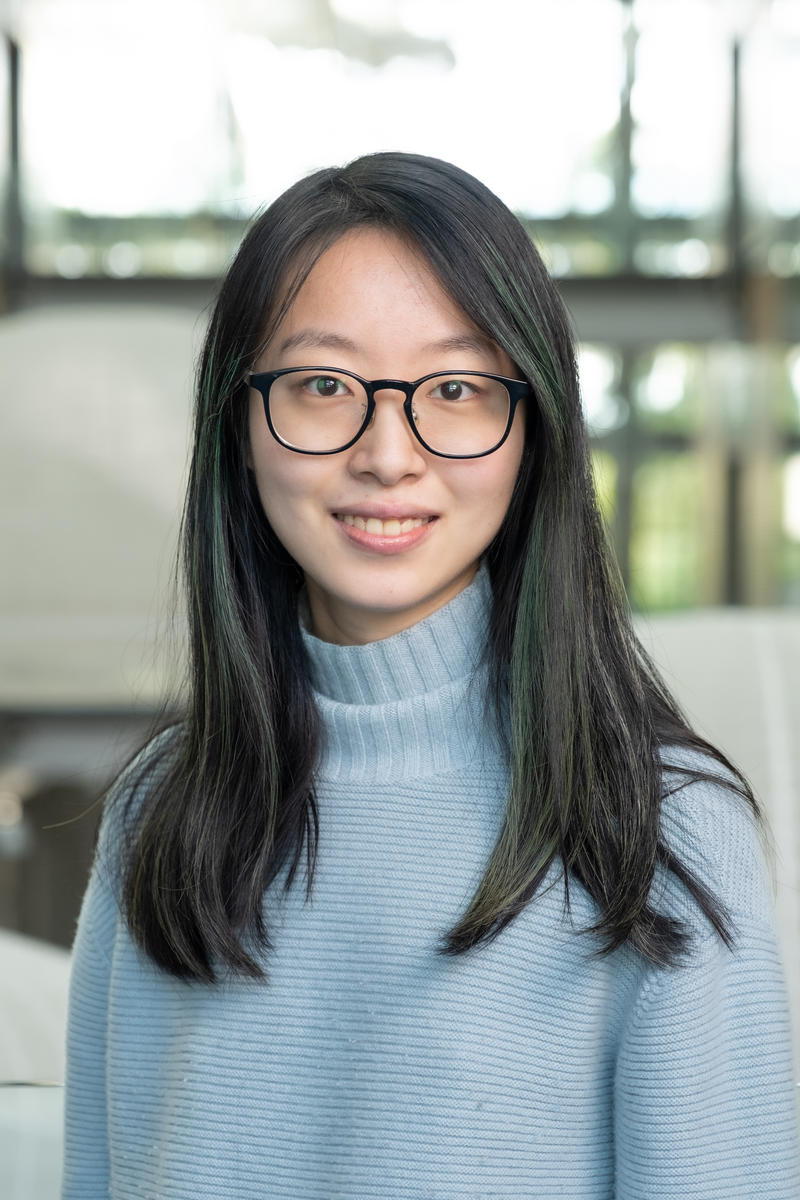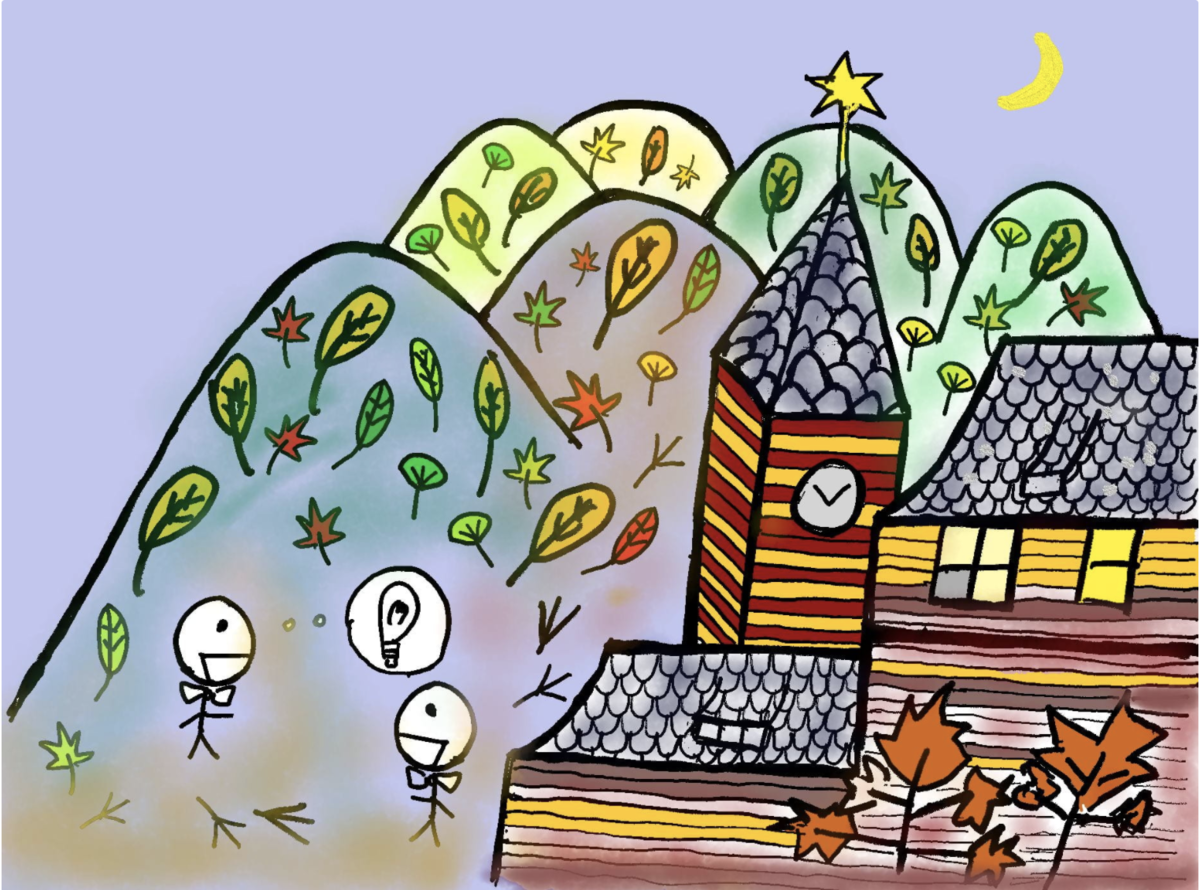Grad Student Q&A: Haina Wang
Haina Wang was still an undergraduate at the National University of Singapore when she authored her first children’s book on chemistry, an introduction to the field with drawings Wang did herself. In a way, it reinforced her own experience with reading. When she was growing up in Hangzhou, China, Wang’s mother gave her a book about scientists who changed the world. She knew then that science would be her path. Today a fourth-year graduate student in the Torquato Lab, Wang continues to connect chemistry and illustration – even drawing out lab notes before an especially grueling day. Here, Wang talks about her research, inspirations, and visual approach to chemistry.
BEFORE WE GET INTO CHEMISTRY, TELL US ABOUT YOUR UPCOMING LUNCH TALK FOR “VOICES OF STEM”
The Council on Science and Technology at Princeton last year created a seminar series called “Voices of STEM,” where we invite artists and educators and engineers and scientists to talk about having their voices heard and about communications. This semester we are doing student-led lunch chats where they can talk about whatever they want: how to manage and balance work and life, how to get motivated. We meet in the Lewis Library. Everyone can attend. I will be speaking on Tuesday, Oct. 28 at noon about motivation in research. (Link for more info: https://cglink.me/2gi/r1288226.)
WHY SCIENCE COMMUNICATIONS?

Photo by C. Todd Reichart
Every day I talk to my mom on the phone and she wants me to explain in simple language what I’m doing. And I think that’s very important. Science is not just publishing papers. It’s also about sharing the excitement of nature. Nature is beautiful, and everyone deserves to know what scientists are doing. How do you frame things so that others can understand? For example, I visualize molecules as my friends and I hope everyone, including non-specialists, can look at nature as a friend. When doing science communications, I don’t get to equations, but I will say that positive and negative charges are like hands holding each other. I make those analogies.
WHAT WAS YOUR PATH TO THEORETICAL CHEMISTRY?
At the National University of Singapore, I was in my first experiment class already thinking, ‘Maybe I’m more interested in theoretical chemistry and how to use mathematics to build models of molecules.’ I actually came to be interested in math quite late. When I went to college I studied calculus, and I got super excited about how mathematicians treat infinity and the infinitesimal. I like abstract things.
WHAT DREW YOU TO PRINCETON CHEMISTRY?
I’m good at math and good at chemistry, so I wanted to combine those two to understand from a theoretical point of view how we build new materials and how we understand the properties of chemical matters. So I looked at lots of universities, and I was just impressed by the figures in Sal’s lab – the crystals and the disordered ground states called hyperuniformity, which is a unique state of matter. I was just fascinated. I asked my artistic self, which lab has the most beautiful figures?
YOU’RE IN A THEORETICAL LAB, BUT YOU APPROACH THINGS VISUALLY ….
I always try to visualize things. Something that’s similarly very abstract is called the reciprocal space. It’s great if you have a crystal and then there is another crystal but in a virtual space associated with it, so that each point in that virtual crystal actually refers to a frequency of the density vibration in the real crystal. If I look at it long enough, I can actually visualize that virtual space – I actually see that it’s just a wave of densities that is propagating through the real space. It takes some practice to see those abstract things. But once you do, it’s very interesting.
HOW DOES CREATIVITY RELATE TO YOUR WORK?

Cover image courtesy of Haina Wang
For my part, creativity means finding beauty. It’s not just mechanical. When I see that particles are arranged nicely or in a seemingly messy way that actually contains some hidden order, I’m excited. It’s almost magical. I think creativity also comes from practice. Sometimes I cannot say clearly what the relationship is between two functions, two descriptors of my material. But I have that gut feeling on what their relationship should be. So, at this point, creativity comes to me and I try to tweak those functions in different ways. It’s about finding new ways.
WHAT’S IT LIKE TO WORK IN THE TORQUATO LAB?
Everyone has their own project, and we discuss with each other in terms of our skills, basic equations, and computer codes. But the problems we are solving are more or less independent from one another. Sal is a strict mentor, very serious, and has very clear projects for each student. He works a lot himself and he expects us to work and pay attention to our research. I like this style. We are a small lab in the Chemistry Department, but an important lab. We also have students from applied math, from physics, from material science, and chemical engineering. We are very, very multidisciplinary.
CAN YOU TELL US ABOUT YOUR RESEARCH?
The broad subject of our lab is statistical mechanics, which is a bridge between the macroscopic and microscopic worlds because we cannot know all the time where each particle, each molecule, or each atom is. We take some samples and ask questions and use those surveys to deduce the bulk properties of materials – electrical, optical, and mechanical. What I’m doing now is inverse statistical mechanics. I start with a bulk property where I want this material to have this kind of strength or this kind of drug delivery speed. Then, I want to engineer the arrangement of particles, or engineer the interactions between molecules, so that in the end, at equilibrium, I get the property I desire where the molecules do what I want them to.
WHAT TOOLS DO YOU USE TO ACHIEVE THIS?
We use algorithms that allow us to tweak the interactions between the particles, and after each tweak we test that their properties satisfy our expectations. If not, we have ways in our algorithm to check interactions between particles again. After a lot of iterations, we expect that the property we want is satisfied.
HOW DO YOU RELAX OUTSIDE OF LAB?

Illustration by Haina Wang
Well, the food here in Princeton is great. The ice cream is great. I like the Halo Pub and Small World Coffee. Also, I crotchet and knit. I just crocheted a little rabbit. And I like traveling. I went to Philadelphia and visited the Constitution Museum and really loved it. I went to a concert last week in New York, a hard metal concert. I didn’t really enjoy the music, but I enjoy New York City. My next trip will be to Arizona!
HOW DO YOU MAXIMIZE YOUR TIME AT PRINCETON?
I take a lot of courses outside of chemistry – in art and math and politics. I take them for the inspiration. For example, I’m taking a science history course right now. It’s about how people in the 17th and 18th centuries believed the whole universe is like a machine. I think we need rationality to understand the world, but there’s also something that is greater. Things that you can only think about mystically. How does that fit in with my research? I don’t think everything can be explained in math. Math simplifies. It gets rid of the details. But as human beings, we really feel things that cannot yet be explained by equations alone. If everything is explainable by equations, it would be boring, right?
Wang blogs at “The Cut and the Cat.” Access it here: https://blog.nus.edu.sg/deka/
